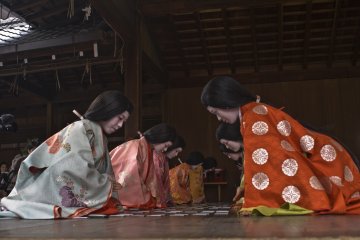
새해 카드 게임, 카루타 하지메 2026
Gloria Ticconi일본의 옛 수도 교토의 야사카 사원이 새해 첫 '카루타' 카드 게임을 주최한다. 주니 히또에 (헤이안 시대 전통 의상)를 입은 여성들이 이 역사 깊은 카드 게임을 할 예정이다.

The Yasaka Cry, located in the Gion district in Kyoto, is often referred to as the Gion Shrine. The shrine is one of the most famous shrines in the city of Kyoto and is located at the end of Shijo-dori Street.
The grounds of the shrine include several buildings and gates. Including the main hall and also a stage.
Every year, Yakasa Shrine hosts numerous events and festivals that are important to the Japanese and is a popular destination for many visitors to Kyoto City.
The Yasaka Shrine respects the gods Susanoo-no-mikoto, Kushiinadahime-no-mikoto, and Yahashira-no-mikogami. Above all, Susanoo-no-mikoto is an important god in Japanese mythology, known for his victory over Yamata-no-orochi (a great serpent with eight heads: a symbol of numerous disasters).
Yasaka Shrine is about a 5-minute walk from Gion Shijo Station on the Keihan Line; alternatively, it can be reached by an 8-minute walk from Kawaramachi Station on the Hankyu Line.

일본의 옛 수도 교토의 야사카 사원이 새해 첫 '카루타' 카드 게임을 주최한다. 주니 히또에 (헤이안 시대 전통 의상)를 입은 여성들이 이 역사 깊은 카드 게임을 할 예정이다.

밤에는 대부분의 사원들이 문을 닫지만 교토의 야사카 사원은 항상 열려 있다. 밤에 열여있으므로 사원은 기온 (Gion) 중간쯤에 밝은 조명을 킨다. 물론 낮에도 아름답지만, '진짜' 아름다운 모습은 밤중에 찾아 볼 수 있다.
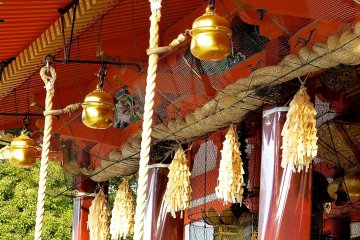
신사에 의하면, 야사카 신사는 헤이안 천도 이전부터 이 땅에 모셔져 있었다. 1300년 동안 사람들의 숭경을 모아 온 신사는, 지금은 인기의 관광명소로 하츠모데의 참배자는 매년 100만명을 넘는다. 11월의 이른 아침, 기온さん은 매우 조용했다. 참배길부터 경내까지 아름답게 치워져있고 본전의 방울(종)은 아침 햇빛을 받아 빛나고 있었다. 신선한 공기를 마시면 가슴속까지 가라 앉힌다. 기온さん은 쿄토의 번화가에 가깝고,"기온"버스 정류장에 내리면 곧바로 서루문이 보인다.

일본의 옛 수도 교토의 야사카 사원이 새해 첫 '카루타' 카드 게임을 주최한다. 주니 히또에 (헤이안 시대 전통 의상)를 입은 여성들이 이 역사 깊은 카드 게임을 할 예정이다.
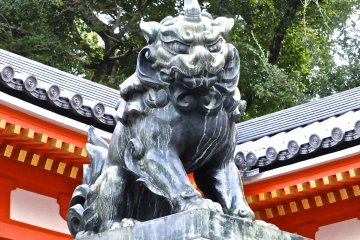

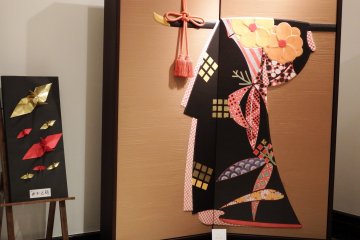
시조 카라스마의 호텔 닛코 프린세스 교토는 싱글 룸 (24㎡)부터 트윈 룸 (48㎡)까지 갖춘 넓적한 객실을 갖추고 있다. 호텔 스태프들은 트레이닝을 잘 받고 최고의 예절과 접대를 한다.
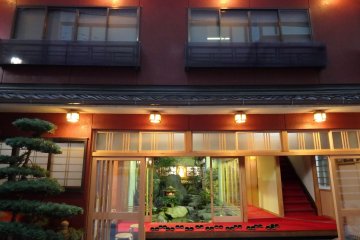

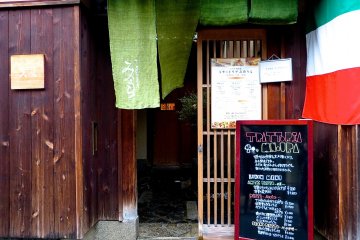
트라토리아 미노우라는 고다이지와 야사카 진자사당 근처에 있는 작은 식당이다. 평일 점심 세트(1500엔)는 합리적이고 맛도 좋았다. 그것은 작은 샐러드와 빵을 곁들인 주요 파스타 요리를 포함한다. 술과 후식은 별도이다.

양 요리 'MIKAKU', 기온 시라카와, 교토; 내가 시라카와 강을 따라 걸어가고 있을 때, 따뜻한 빛으로 불이 켜져 있는 멋지고 세련된 강변 식당이 눈에 띄었고, 갑자기 나는 그곳에 가고 싶었다
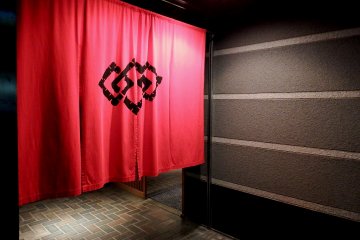
교토 시라카와 거리에 있는 기온비프 미카쿠: 엄선된 일본산 쇠고기만이 제공된다. 교토 기온 지역의 시라카와 강을 내려다보는 낭만적인 분위기의 레스토랑이다.

Maruyama Park is the oldest public park in Kyoto and a popular springtime cherry blossom viewing spot. It opened in 1886 and is located next to Yasaka Shrine in Higashiyama District. The park was laid out by the well-known gardening expert Ogawa Jibee (1860–1933). As it is one of the most popular places for hanami in Kyoto, it can get quite crowded during the high season in April. The main attraction of the park is a beautiful weeping cherry that is illuminated at night. In the southwest of the park is the Chorakukan Villa, which the Japanese tobacco king Murai Kichibee had built. This property is now used as a hotel.

Kodaiji (高台寺) is located northeast of the Yasaka Hokanji Temple at the foot of the Higashiyama Ryozen Mountains in Kyoto. The official name of the temple is Kodaiji-Jushozenji Temple. In 1606, the temple of Kita-no-Mandokoro was dedicated in memory of her late husband. Kita-no-Mandokoro was also known as nene. The Kaisando (Founder's Hall), Otama-ya (Sanctuary), Kasatei (Tea House), Shiguretei (Tea House), Omotetmon (Gate to the Sanctuary), and Kangetsudai (Moon Viewing Pavilion) are designated as important cultural assets in Japan. The temple garden is said to have been designed by the landscape gardener Kobori Enshu (1579-1647). The Japanese government has designated the garden as a historic site and a place of scenic beauty. The interior of the main building was originally painted with lacquer and covered with exquisite gold decorations. However, the current building was rebuilt in 1912 after several fires. Kodai-ji hosts modern art exhibitions in spring and fall. These are set up in the rock garden in front of Houjyo and are creatively illuminated at night.
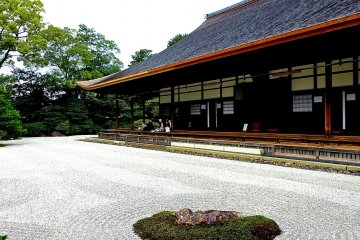
Kennin-ji is a historic Zen Buddhist temple in Higashiyama, Kyoto, Japan, near Gion, at the end of Hanami Lane. It is considered to be one of the so-called Kyoto Gozan or "five most important Zen temples of Kyoto". [Wikipedia]